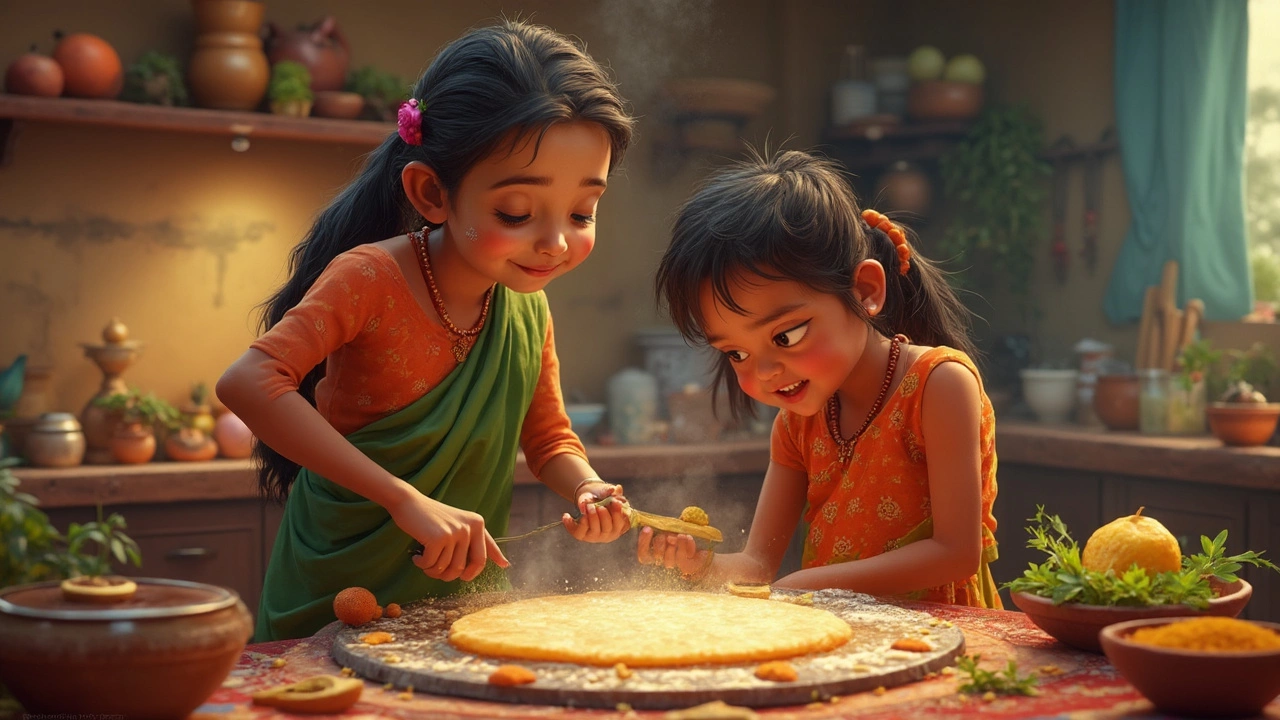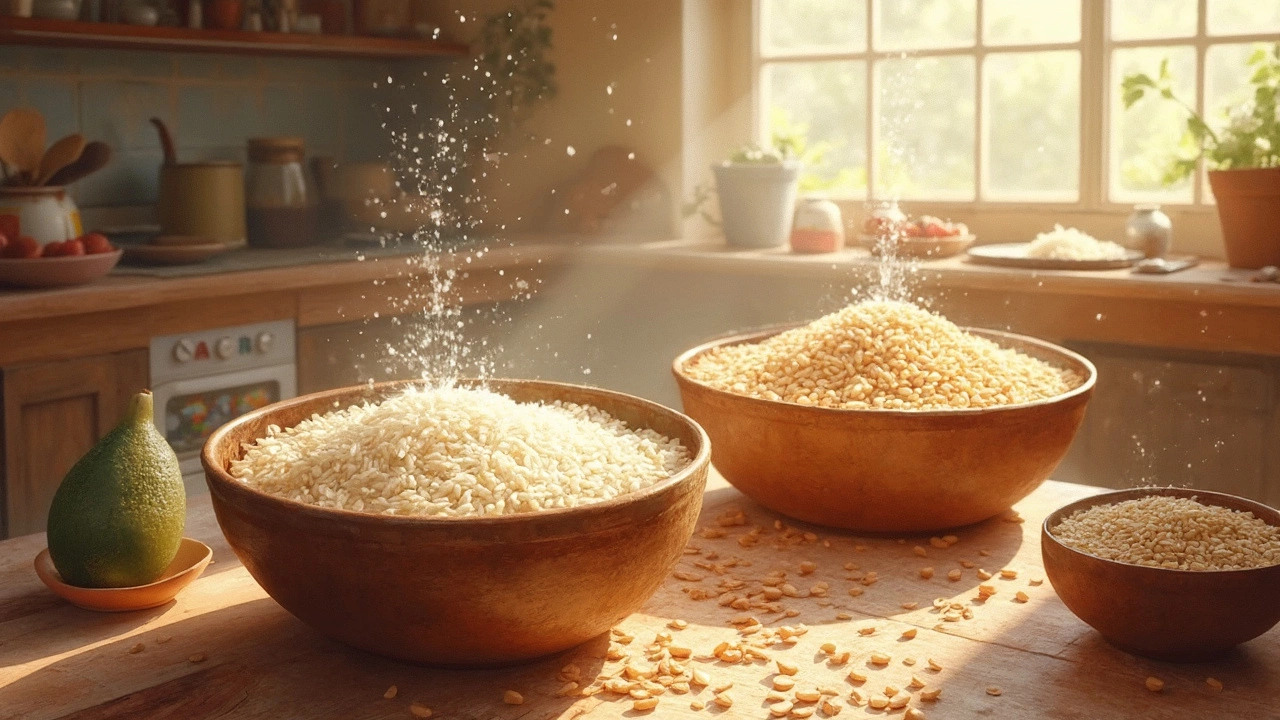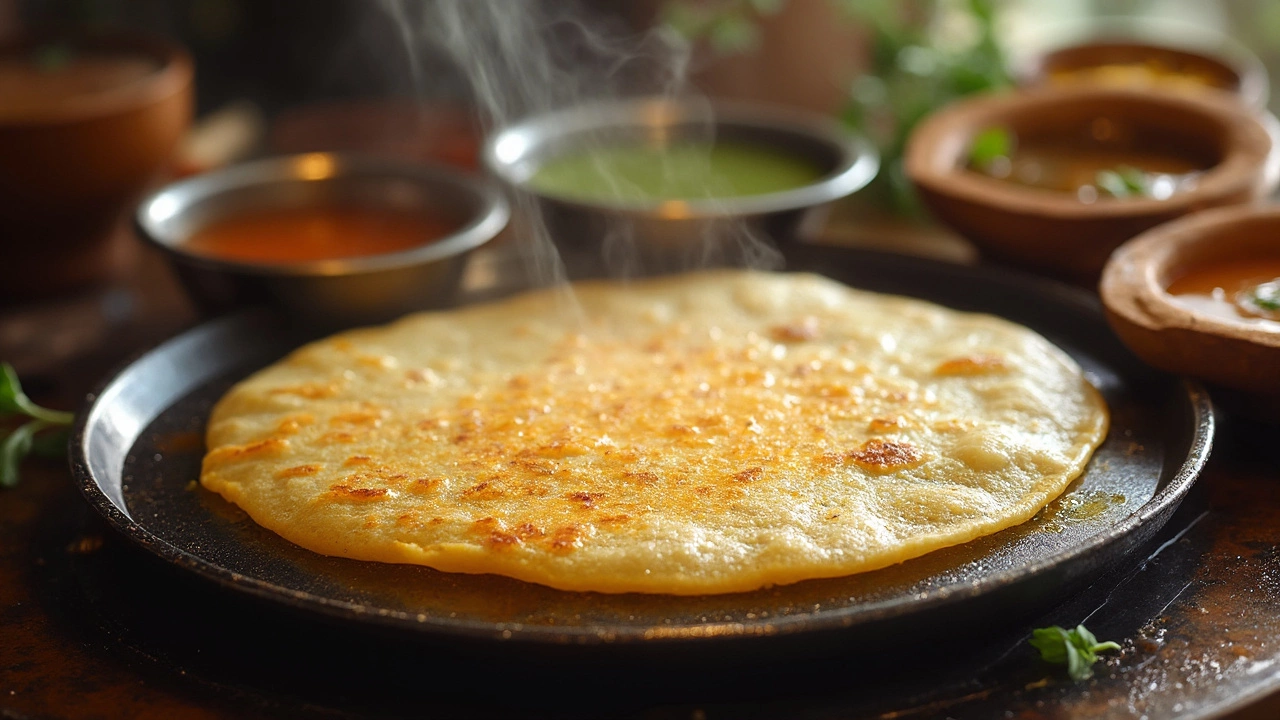
If dosa is your love language, the whole making process can feel like an art. You know the debate sparking whispers in kitchens across the world—can you soak rice and urad dal together? Let’s break it down. Traditionally, you'll soak them separately, giving each ingredient its own time to bloom into batter perfection.
There's rice, which gives your dosa that lovely crisp edge and it's like the show-stealer. Then there's urad dal, the quiet hero, adding the fluff to your crispy dream come true. Mixing them up often seems like an efficient shortcut. But do we want to make shortcuts in art?
- Understanding Dosa Batter Basics
- Why Ingredients Matter
- The Case for Soaking Separately
- Is Soaking Together the Future?
- Tips for Perfect Dosa Batter
Understanding Dosa Batter Basics
Crafting the perfect dosa starts with nailing the dosa batter recipe. The process might seem simple, but getting the right balance of ingredients is key to achieving that golden brown, crispy texture we all cherish.
To kick things off, you need just two main ingredients: rice and urad dal. The trick is in knowing that these two have different soaking requirements. Rice needs to soften and reach a slightly pliable state, while urad dal must swell, aiding in that fluffiness we adore. Typically, you'll soak rice for about 6 hours, and urad dal for 4 hours. This time difference is why many folks stick to soaking them separately.
Once soaked, the magic happens in blending. It's not just about throwing it all in a blender; there's a method to this madness. Start by grinding the urad dal until it's smooth and silky. Then, move to the rice, aiming for a slightly gritty texture. Combine these two pastes in a bowl, mixing with a touch of salt to help with fermentation. Yep, fermentation is an unsung hero here, giving your dosa its delightful tangy taste.
Speaking of fermentation, letting your batter sit for at least 8 hours at room temperature works wonders. But hey, if you're in colder places, it can take a bit longer. Once fermented, your batter is ready to grace your pan, sizzling and transforming into mouthwatering dosas.
So, to wrap it up: mastering this artistry is all about taking your time with soaking and blending, and letting fermentation do its magic. Trust me, once you get the hang of it, you'll be whipping up dosas like a pro in no time.
Why Ingredients Matter
When it comes to crafting the perfect dosa batter, the ingredients play the lead role. Rice and urad dal aren't just thrown together for fun. They've got distinct roles which are crucial for that dreamy texture you crave in a dosa.
Let's talk about rice. It’s responsible for that lovely golden-brown crispiness we all love. You know that crunch when you bite into a hot dosa? That’s the rice doing its job. Different types of rice can be used, but typically short-grain or parboiled rice is preferred because it helps in achieving the right batter consistency.
Now, urad dal might not look flashy, but it’s the backbone of the dosa. It provides that heavenly fluffiness and imparts the necessary protein, making dosa a wholesome meal. The dal needs to have a certain softness, which it achieves when soaked separately, soaking up water like a sponge.
If both are soaking together, the water absorption might not be optimal, possibly leading to uneven fermentation. This means your batter can miss that key punch of softness combined with crispiness.
| Ingredient | Role in Dosa |
|---|---|
| Rice | Provides crispiness |
| Urad Dal | Adds fluffiness and protein |
So, when we argue about soaking them together, we're really debating the balance between crisp and fluffy. Being mindful about how each ingredient performs means nailing that perfect dosa every time. Whether you choose to maintain tradition or experiment a little, knowing what each component does is key to delicious results.

The Case for Soaking Separately
Alright, so here’s the scoop on why your grandma insisted on soaking rice and urad dal separately: it's all about letting each ingredient shine. Rice and urad dal have different textures and needs; soaking them separately ensures they become the best version of themselves.
When you soak rice on its own, you're letting it absorb the right amount of water to soften just enough for that crispy outer layer of dosa. Too much water, and you risk losing that crispness. On the other hand, urad dal needs to soak up water to become fluffy and blend into a smooth paste, which is essential for the batter to ferment properly and rise.
Here’s a simple breakdown:
- Rice Soaking Time: Typically about 4 to 6 hours. It gives you the perfect texture that grinds well into a slightly grainy texture, which you need for your dosa batter recipe.
- Urad Dal Soaking Time: Usually around 8 hours or overnight for ideal fermentation. This time allows the dal to swell and it's crucial for getting that pureed fluffy consistency.
Those separate soaking times might feel like a lot of planning, but boy, does it pay off when you take that first bite of your homemade dosa! If there’s anything you don't want to compromise, it’s that beautiful texture and perfect tangy taste.
Is Soaking Together the Future?
For those eyeing efficiency in the kitchen, the idea of soaking rice and urad dal together for dosa might sound appealing. Imagine cutting down half the prep time by skipping the separate soaking routine. But hey, the art of dosa is not just about saving time; it’s about taste and texture too.
Some tried-and-true dosa enthusiasts argue that soaking them together can alter the fermentation process. Rice and urad dal have different absorbing properties, and more importantly, distinct roles in the fermentation process. Urad dal is rich in protein, which aids in creating a frothy, airy batter. Rice, meanwhile, gets you that crispy golden-brown finish. If you soak them together, the urad dal might just get overshadowed, meaning it won't go through its magical transformation, and you could end up with a pancake instead of a dosa.
But let's not shut the door on innovation just yet. With tweaks in technique, some home cooks have experimented and even found success in soaking together. Here's a simple strategy: use a superior quality blender. A high-power blender can make a significant difference in getting the right batter consistency even if soaked together.
| Ingredient | Traditional Soak Time | Combined Soak Result |
|---|---|---|
| Rice | 4 to 6 hours | May be slightly hard |
| Urad Dal | 4 to 5 hours | Less foamy, may need adaption |
The consensus isn’t there yet, but more adventurous home cooks are embracing the technique. If you’re low on time or experimenting just sounds fun, give it a shot. You might just stumble onto your next great kitchen hack!

Tips for Perfect Dosa Batter
Getting that dosa batter just right is like cracking the secret code to crispy, golden goodness. Here are some tried-and-true tricks to help you nail it every time:
- Soaking Time: Give the rice and urad dal time to relax in their water beds for about 4 to 6 hours. It helps them soak up the right amount of water, which will affect the grind quality.
- Grinding: Always grind the dal and rice separately. Start with the dal, grinding it until silky and smooth—think thick pancake batter. The rice, though, should be coarser to give that crunchy delicacy.
- Fermentation: Here's where magic happens. Mix your batters and let them sit for about 8 to 12 hours in a warm spot. That natural fermentation brings the right tang to the table.
- Consistency Check: The batter should be like a runny pancake batter. Too thick, and you're looking at chewy dosas. Too thin, and they won't hold together.
- Salt: Feel free to add it just before fermentation or right after. Adding it early can slow down fermentation.
Let me share a quick tip table used at home that might help in checking the grind time:
| Ingredient | Grind Time (minutes) |
|---|---|
| Urad Dal | 20-25 |
| Rice | 15-20 |
Having some difficulties? Don't stress. Even the best chefs have their off days. Just tweak the method a bit and keep experimenting until you've got the batter that makes your dosa dreams come true.